
Wax mandrels
It is unlikely but possible that the author invented the wax mandrel - certainly he has seen no reference to anything the same or similar.
Their creation and use started with machining of small components that had holes in them, such as big ends, eccentrics and their like. The first photograph shows a length of steel rod that is centred both ends charged with some shellac. On this particular job the centres are not used (photo 27). A connecting rod from a Stuart S50 is mounted on the rod (photo 28). A shoulder is then turned on the big end of the connecting rod (photo 29).
Photograph 30 shows another big end mounted on a stub mandrel. This particular mandrel is useful if the hole is very large; it is made from hexagonal stock so it can be taken out of the chuck and replaced in the same orientation.
The author mostly uses a wax mandrel when machining cylinders. The bronze cylinders in the next couple of photographs that are being machined are for a Blackgates ‘V’ twin oscillating steam engine.
First the cylinders were mounted in a four-jaw chuck and their port face and cylinder ends were machined flat but still well over size. The machined port face was glued to a wax chuck and small faces were machined on the opposite side of the cylinder so that a four-jaw chuck would have something parallel to grip. Alas no photographs were taken at this stage of the operation.
This story is from the 4625 edition of Model Engineer.
Start your 7-day Magzter GOLD free trial to access thousands of curated premium stories, and 9,000+ magazines and newspapers.
Already a subscriber ? Sign In
This story is from the 4625 edition of Model Engineer.
Start your 7-day Magzter GOLD free trial to access thousands of curated premium stories, and 9,000+ magazines and newspapers.
Already a subscriber? Sign In
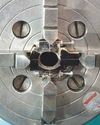
WORKSHOP TIP - Boring Eccentrics
I am making a 1 inch Minnie traction engine and have arrived at the machining of the eccentric straps.
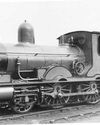
Wenford A 7¼ Inch Gauge 2-4-0 Beattie Well Tank
The stage has now been reached where the well tank body can be completed but beforehand there are some internal details to add.
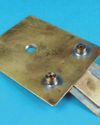
Vertical Boiler Locomotives
Vertical Boiler Locomotives
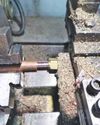
Union Nuts, and How to Make Them
These are quite different from those commercially available and are made from copper
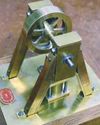
SHOWCASE Paul's Engine
One day my son Paul came to me and asked if we could make something in my workshop, so that he could learn engineering processes.
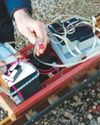
CLUB NEWS
My secret’s out!

Building Dancer - The Boiler
Dancer needed a boiler that would be somewhat larger than the size permitted under the Model Engineering exemptions in the New Zealand regulations.

An Inverted ‘Ross Yoke' Watercooled Stirling Engine
As with all my hot air engines they are cheap to build, mostly from scrap
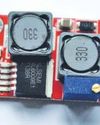
A Draught Proposal
A Draught Proposal
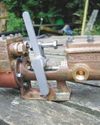
A Boiler Feed Pump
A Boiler Feed Pump